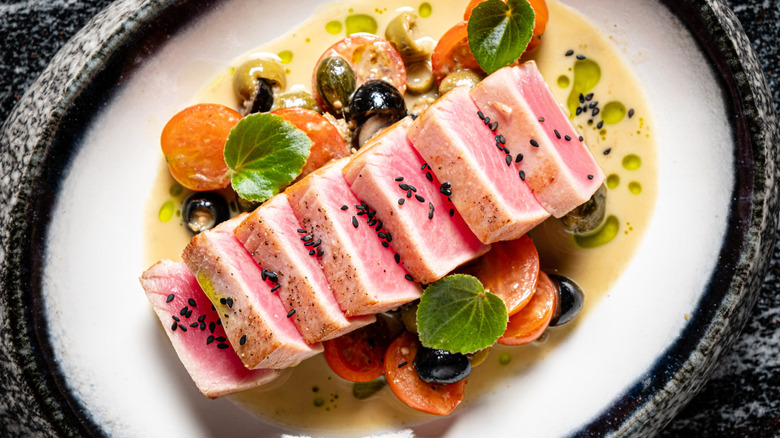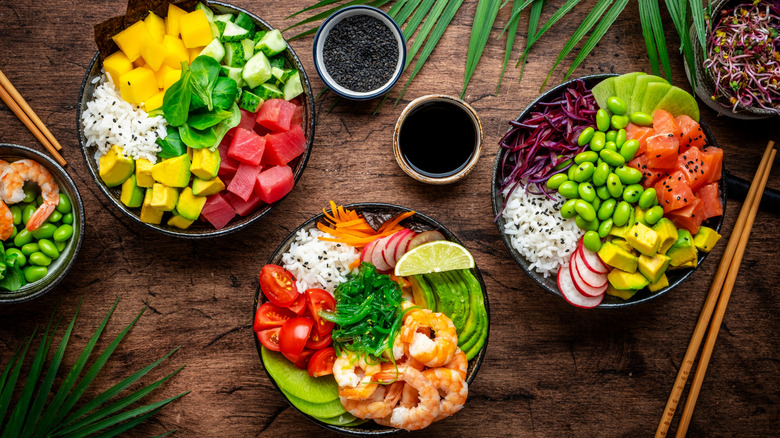Chefs Often Steer Clear Of One Cuisine When Dining At Restaurants
The term "fusion cuisine" may have originated in the late '80s, at which time it was quite the trend, but the concept itself is much older. Yōshoku, a type of western-influenced Japanese food which includes the ketchup fried rice omelet called omurice as well as sandos on milk bread, dates back to the 19th century, while budae jjigae, aka army base stew, is a byproduct of the Korean War (1950 to 1953). Even today, however, both the term and the cooking style remain controversial and some chefs are decidedly anti-fusion to the point where they're unlikely to order these dishes when dining out. Chef Peter of the Brooklyn Sichuan restaurant Meili says of fusion dishes, "They often sound exciting on the menu but rarely deliver balance or depth. I'd rather have one cuisine done well than a confusing mix of flavors that feels like it's trying too hard."
Sirikalya Promkul, owner of the Bangkok-based Thai cooking school Siam Culinary Academy, concurs with this statement. "As a professional Thai chef who has been cooking and serving customers from around the world, I prefer authentic Thai cuisine over fusion," she told us. The reason behind this, she explained, is that Thai recipes have evolved over hundreds of years, and by this point, they no longer need tinkering with. She also observed, "Students travel from all over the world to learn authentic recipes with us and they prefer to learn the original Thai way ... Sometimes fusion takes things a little too far, and you can't even see the nature of the Thai dish. It might be delicious, but it's not really a Thai dish."
Not all chefs are anti-fusion, though
Two food professionals who spoke with us had positive things to say about fusion food. Pokeworks co-founder Mike Wu pointed out, "Asian fusion cuisine is huge right now and I believe it will only continue to grow." He sees this as a good thing since it exposes a wider variety of people to Asian flavors that they might not have tried otherwise. He also noted that poke is a Hawaiian-Asian fusion dish with deep roots and said his restaurant chain is working to further the experience by adding Chinese, Korean, and Japanese-style sauces. "Our approach is about respecting the authenticity of Asian flavors while making them approachable, craveable, and fun for a wider audience. That balance, innovation rooted in tradition, is what makes Asian fusion so compelling, and why we're proud to keep pushing the boundaries."
Frank Bonanno, a 16-time James Beard-nominated chef and proprietor of Denver's Bonanno Concepts restaurant group, is another fusion fan. The way he sees it, "Asian fusion has a bad reputation because most people do it wrong. They just throw soy sauce on pasta and you have your fusion ready. That's not fusion, it's lazy cooking with an identity crisis ... Good fusion adheres to the techniques and flavor profiles of both schools while finding common ground between them." In his opinion, fusion food is as all-American as it gets: "Fusion is not out to replace traditional cuisine as such — it's creating something new that reflects how we live and eat in America today. We don't hold with purity. We mix cultures, languages, and tastes. Our food should reflect this."

